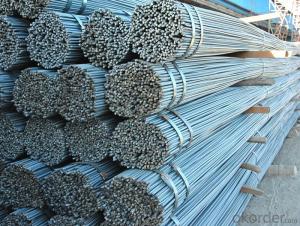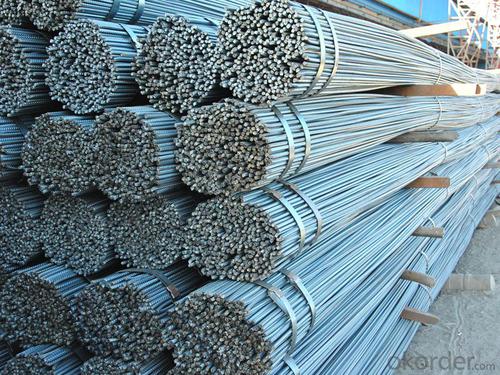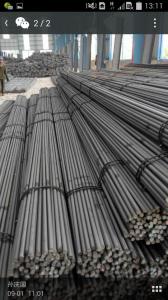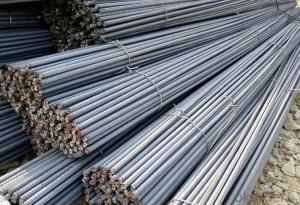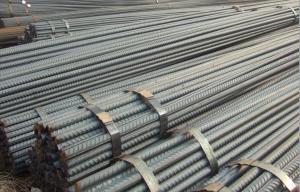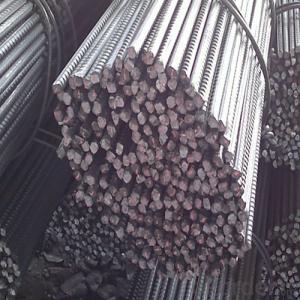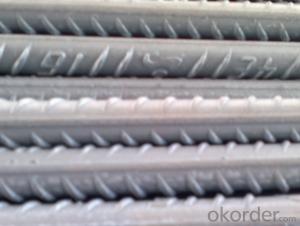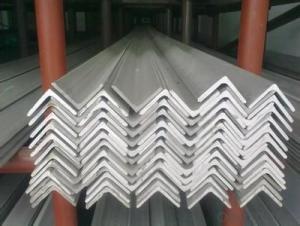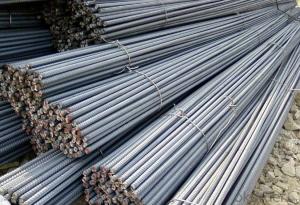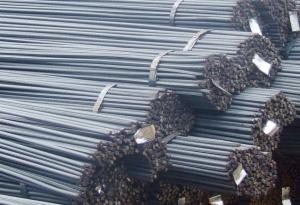Hot Rolled Deformed Bar HRB400 or BS449 B500B
- Loading Port:
- Tianjin
- Payment Terms:
- TT OR LC
- Min Order Qty:
- 25 m.t.
- Supply Capability:
- 200000 m.t./month
OKorder Service Pledge
OKorder Financial Service
You Might Also Like
Product Description:
OKorder is offering Product Description:
OKorder is offering Hot Rolled Deformed Bar HRB400 or BS449 B500B at great prices with worldwide shipping. Our supplier is a world-class manufacturer of steel, with our products utilized the world over. OKorder annually supplies products to European, North American and Asian markets. We provide quotations within 24 hours of receiving an inquiry and guarantee competitive prices.
Product Applications:
Deformed bar is widely used in buildings, bridges, roads and other engineering construction. Big to highways, railways, bridges, culverts, tunnels, public facilities such as flood control, dam, small to housing construction, beam, column, wall and the foundation of the plate, deformed bar is an integral structure material. With the development of world economy and the vigorous development of infrastructure construction, real estate, the demand for deformed bar will be larger and larger
Product Advantages:
OKorder's Hot Rolled Deformed Bar HRB400 or BS449 B500B are durable, strong, and resist corrosion, exact size, regular package, chemical and mechanical properties are stable.
Main Product Features:
· Premium quality
· Prompt delivery & seaworthy packing (30 days after receiving deposit)
· Corrosion resistance
· Can be recycled and reused
· Mill test certification
· Professional Service
· Competitive pricing
Product Specifications:
Manufacture: Hot rolled
Grade: BS4449
Certificates: ISO, SGS, BV, CIQ
Diameter: 6mm,8mm,10mm,12mm,14mm,16mm,18mm,20mm,
22mm,25mm,28mm,32mm,36mm,40mm,50mm
Length: 6M, 9M,12M or as required
Packaging: Export packing, nude packing, bundled
Chemical Composition: (Please kindly find our chemistry of our material based on HRB500 as below for your information)
Grade | Technical data of the original chemical composition (%) | ||||||
C | Mn | Si | S | P | V | ||
HRB400 | ≤0.25 | ≤1.60 | ≤0.80 | ≤0.045 | ≤0.045 | 0.04-0.12 | |
Physical capability | |||||||
Yield Strength (N/cm²) | Tensile Strength (N/cm²) | Elongation (%) | |||||
≥400 | ≥570 | ≥14 | |||||
Theoretical weight and section area of each diameter as below for your information:
Diameter(mm) | Section area (mm²) | Mass(kg/m) | Weight of 12m bar(kg) |
6 | 28.27 | 0.222 | 2.664 |
8 | 50.27 | 0.395 | 4.74 |
10 | 78.54 | 0.617 | 7.404 |
12 | 113.1 | 0.888 | 10.656 |
14 | 153.9 | 1.21 | 14.52 |
16 | 201.1 | 1.58 | 18.96 |
18 | 254.5 | 2.00 | 24 |
20 | 314.2 | 2.47 | 29.64 |
22 | 380.1 | 2.98 | 35.76 |
25 | 490.9 | 3.85 | 46.2 |
28 | 615.8 | 4.83 | 57.96 |
32 | 804.2 | 6.31 | 75.72 |
36 | 1018 | 7.99 | 98.88 |
40 | 1257 | 9.87 | 118.44 |
50 | 1964 | 15.42 | 185.04 |
FAQ:
Q1: How do we guarantee the quality of our products?
A1: We have established an advanced quality management system which conducts strict quality tests at every step, from raw materials to the final product. At the same time, we provide extensive follow-up service assurances as required.
Q2: What makes stainless steel stainless?
Within three days of placing an order, we will begin production. The specific shipping date is dependent upon international and government factors, but is typically 7 to 10 workdays.
Q3: What makes stainless steel stainless?
A3: Stainless steel must contain at least 10.5 % chromium. It is this element that reacts with the oxygen in the air to form a complex chrome-oxide surface layer that is invisible but strong enough to prevent further oxygen from "staining" (rusting) the surface. Higher levels of chromium and the addition of other alloying elements such as nickel and molybdenum enhance this surface layer and improve the corrosion resistance of the stainless material.
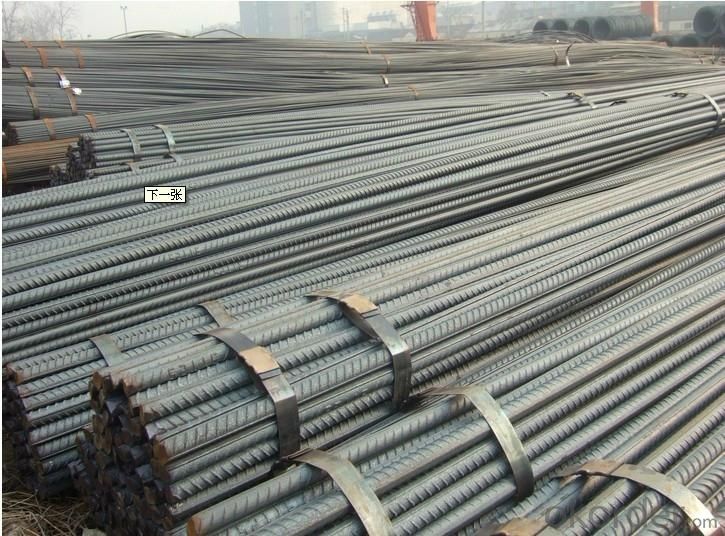
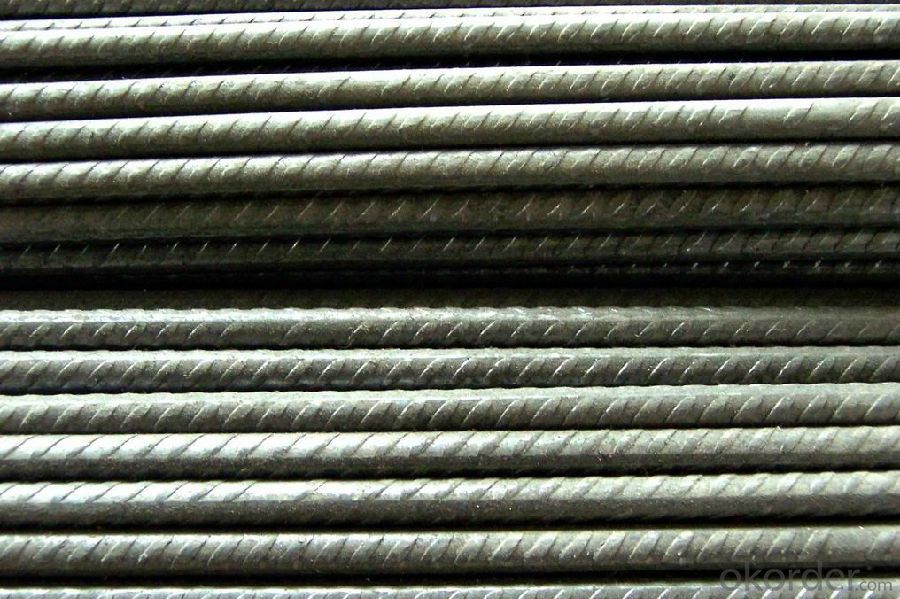
- Q: How is steel rebar manufactured?
- The process of making steel rebar, also known as reinforcing bar, involves a series of steps to ensure its high quality and durability. To begin with, raw materials such as iron ore, coal, and limestone are carefully chosen and prepared. Iron ore is extracted from mines and processed to eliminate impurities. Coal is used as a fuel to heat the iron ore, while limestone acts as a flux to remove impurities during the heating process. Once the raw materials are ready, they are combined in a blast furnace. This furnace, a large cylindrical structure, subjects the iron ore, coal, and limestone to extreme temperatures. The intense heat triggers a chemical reaction that separates the iron from impurities, resulting in molten iron. The molten iron is then transferred to either a basic oxygen furnace (BOF) or an electric arc furnace (EAF). In the BOF process, the molten iron is mixed with scrap steel and other alloys to achieve the desired steel composition. Oxygen is blown into the furnace, removing impurities and adjusting the carbon content. In the EAF process, electricity is used to melt the scrap steel and other alloys, leading to chemical reactions that modify the composition and eliminate impurities. Once the steel is produced, it is poured into continuous casting machines, which shape it into long, rectangular strands called billets. These billets go through a series of rolling mills, gradually reducing their size and shaping them into the desired cross-sectional profile. The rolling process also enhances the strength and durability of the steel. After the rolling process, the rebar undergoes quenching and tempering. This involves rapidly cooling the rebar in water to increase its hardness, followed by reheating it to a specific temperature and then slowly cooling it. This process improves the rebar's strength and ductility, making it suitable for reinforcing concrete structures. Finally, the rebar is cut into the desired lengths and often undergoes surface treatment, such as galvanization or epoxy coating, to enhance its resistance to corrosion. It is then bundled and shipped to construction sites, where it is used to reinforce concrete structures like buildings, bridges, and roads. To summarize, the production of steel rebar involves the selection and preparation of raw materials, the melting and refining of iron in a blast furnace or electric arc furnace, the shaping of the steel into billets through continuous casting and rolling, the quenching and tempering process to improve its strength and ductility, and the final cutting and surface treatment before it is ready for use in construction projects.
- Q: Can steel rebars be used in hospital construction?
- Yes, steel rebars can be used in hospital construction. Steel rebars are commonly used in reinforced concrete structures, including hospitals, to provide strength and support to the building. They help enhance the structural integrity and ensure the safety and durability of the hospital construction.
- Q: What is the elongation of steel rebars?
- The elongation of steel rebars pertains to how much they can deform or stretch before fracturing or breaking. It measures the ductility or flexibility of the steel rebars. Elongation is typically expressed as a percentage of the rebar's original length. The elongation of steel rebars varies based on the grade or type of steel used and the manufacturing processes involved. In general, steel rebars have a relatively high elongation compared to materials like concrete or timber. This makes them suitable for applications that require flexibility and resistance to deformation, such as reinforced concrete structures. Considering the elongation of steel rebars is crucial in structural design and construction. It affects the rebar's ability to withstand loads, particularly when subjected to tension or bending forces. Higher elongation values indicate a greater capacity for the rebar to stretch and deform without breaking, enhancing the overall performance and safety of the structure. To ensure the proper selection and utilization of steel rebars, it is essential to refer to the relevant standards and specifications provided by regulatory bodies and industry organizations. These guidelines outline specific requirements and recommendations for the elongation of steel rebars, along with other mechanical properties, to guarantee the structural integrity of construction projects.
- Q: Can steel rebars be used in structures with high resistance to moisture?
- Yes, steel rebars can be used in structures with high resistance to moisture. Steel rebars are commonly used in reinforced concrete structures, including those that are exposed to moisture such as bridges, marine structures, and underground structures. However, it is important to use properly coated or corrosion-resistant steel rebars, and ensure proper concrete cover and waterproofing measures are implemented to protect against the potential corrosion caused by moisture.
- Q: Can steel rebars be used in high-security facility construction?
- Yes, steel rebars can be used in high-security facility construction. Steel rebars are strong and durable, making them a suitable choice for reinforcing concrete structures. In high-security facilities, such as prisons or government buildings, it is crucial to ensure the construction materials provide maximum strength and resistance against potential threats. Steel rebars offer excellent tensile strength, which helps reinforce concrete and enhance the overall structural integrity of the building. Additionally, steel rebars can be customized to meet the specific security requirements of the facility, such as using thicker rebars or increasing their spacing for added reinforcement. Therefore, steel rebars are commonly used in high-security facility construction to provide a robust and secure infrastructure.
- Q: How do steel rebars affect the acoustic properties of a structure?
- The acoustic properties of a structure can be greatly influenced by steel rebars. This is due to their high density and rigidity, which allows them to conduct sound and vibrations effectively. As a result, when sound waves or vibrations encounter steel rebars, they can easily pass through them, resulting in higher levels of noise and reduced acoustic insulation. Regarding airborne sound transmission, steel rebars can create a direct pathway for sound waves to travel through a structure. This can lead to sound amplification, especially in areas where rebars directly contact walls or floors. Consequently, the overall acoustic quality of the structure may be compromised, resulting in increased noise levels and decreased speech intelligibility. Steel rebars can also impact a structure's ability to block impact or structure-borne noise. For instance, when vibrations are generated from activities like walking or machinery, the rigid steel rebars can efficiently transmit these vibrations throughout the structure. This can cause the amplification and propagation of structure-borne noise, making it more noticeable in various areas of the building. To minimize the negative effects of steel rebars on a structure's acoustic properties, various techniques can be employed. One common method is to use acoustically decoupled materials or resilient mounts to isolate the rebars from the surrounding structure, reducing the transmission of vibrations. Additionally, incorporating sound-absorbing materials like acoustic panels or insulation can help absorb and dampen sound waves, improving the overall acoustic performance of the space. In conclusion, steel rebars can significantly impact the acoustic properties of a structure due to their high density and rigidity. They can efficiently conduct sound and vibrations, leading to increased noise levels and reduced acoustic insulation. Therefore, careful consideration of acoustic design and the appropriate use of soundproofing measures are crucial in minimizing the adverse effects of steel rebars on a building's acoustic quality.
- Q: What is the effect of moisture content on the strength of steel rebars?
- The strength of steel rebars can be significantly affected by their moisture content. When exposed to moisture, particularly water or high humidity, corrosion can occur. This happens when the moisture reacts with the iron in the steel, resulting in the formation of iron oxide or rust. As a result, the steel rebars weaken and their overall strength is reduced. Moisture presence speeds up the corrosion process, causing the gradual loss of structural integrity in the steel rebars. Corroded rebars become brittle and are more prone to fractures or failure when subjected to a load. This can be especially problematic in construction projects that utilize steel rebars to reinforce concrete structures, as the corrosion compromises the durability and safety of the entire structure. Moisture not only directly impacts the strength, but it also contributes to other issues such as cracking, spalling, and concrete degradation. When moisture interacts with the concrete surrounding the steel rebars, it leads to expansion and contraction, resulting in internal stress and potential damage. This further weakens the rebars and the overall structure. To counteract the negative effects of moisture on steel rebars, several protective measures can be adopted. These measures may include the use of corrosion-resistant coatings like epoxy or zinc, which act as a barrier between the rebars and moisture. Additionally, ensuring proper drainage and ventilation in construction projects can prevent the accumulation of moisture, reducing the risk of corrosion and maintaining the strength and longevity of the steel rebars. In conclusion, it is vital to carefully consider the moisture content and its potential impact on steel rebars in any construction project. By addressing and managing moisture, engineers and builders can guarantee the structural integrity and safety of the steel rebars, ultimately improving the strength and durability of the entire structure.
- Q: Can steel rebars be used in high-rise construction projects?
- Certainly, steel rebars are suitable for implementation in high-rise construction endeavors. In actuality, they are extensively employed within the construction sector due to their formidable robustness and durability. Steel rebars are commonly utilized in reinforced concrete frameworks, such as high-rise edifices, for the purpose of furnishing tensile strength and fortifying the concrete against potential fractures or breakdowns. The incorporation of steel rebars in high-rise construction undertakings is pivotal in safeguarding the structural soundness and steadiness of the building. Furthermore, steel rebars offer a certain degree of design flexibility and can be effortlessly tailored to meet the precise requisites of each individual project. On the whole, steel rebars are an indispensable constituent in high-rise construction and assume a pivotal role in guaranteeing the security and longevity of these structures.
- Q: How do steel rebars affect the overall vibration resistance of a structure?
- Steel rebars can significantly enhance the overall vibration resistance of a structure. By providing additional strength and stiffness, rebars increase the structural integrity and help to distribute and dissipate vibrational energy. This reinforcement effectively reduces the magnitude of vibrations and minimizes the risk of structural damage or failure during dynamic events, such as earthquakes or high winds.
- Q: What is the role of steel rebars in preventing structural failures?
- The construction industry relies heavily on steel rebars to prevent structural failures. These reinforcing bars, also known as steel rebars, are vital for strengthening and reinforcing concrete structures, ensuring their durability and ability to withstand various forces. One of the main functions of steel rebars is to improve the tensile strength of concrete. While concrete is excellent for compression, it lacks strength in tension. By incorporating steel rebars into concrete structures, this weakness can be overcome by providing resistance to tensile forces. Acting as reinforcements, steel rebars effectively absorb and distribute tensile stresses throughout the structure, preventing the formation of cracks and fractures, and ultimately averting structural failures. Moreover, steel rebars play a critical role in enhancing overall structural stability and preventing failures. By reinforcing concrete, rebars enhance the structural integrity and increase the load-bearing capacity of the structure. This allows the structure to withstand heavier loads and forces, including those caused by natural disasters, extreme weather conditions, or human activities. Steel rebars are also indispensable in preventing structural failures resulting from corrosion. Concrete structures are exposed to various environmental factors, such as moisture, chemicals, and salts, which can cause corrosion of the reinforcing steel. However, as steel rebars are typically coated or protected with anti-corrosive materials, they act as a barrier against corrosion, ensuring the long-term durability and integrity of the structure. Furthermore, steel rebars contribute to preventing structural failures by providing stability during construction. They are strategically placed within the concrete forms at critical points and areas susceptible to high stress. This ensures that the structure remains stable and can withstand the loads and forces exerted during and after construction. In conclusion, the role of steel rebars in preventing structural failures is multifaceted. They enhance the tensile strength of concrete, increase structural stability, prevent corrosion, and provide stability during construction. By reinforcing concrete, steel rebars significantly contribute to the overall strength, durability, and safety of structures, ultimately averting structural failures and ensuring the longevity of the built environment.
Send your message to us
Hot Rolled Deformed Bar HRB400 or BS449 B500B
- Loading Port:
- Tianjin
- Payment Terms:
- TT OR LC
- Min Order Qty:
- 25 m.t.
- Supply Capability:
- 200000 m.t./month
OKorder Service Pledge
OKorder Financial Service
Similar products
Hot products
Hot Searches
Related keywords
